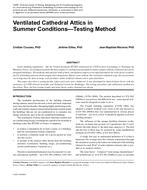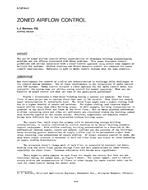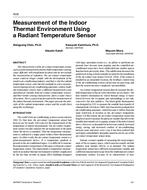Click here to purchase
This paper proposes a methodology to calibrate multizoneairflow models in existing buildings. The methodologyhas been demonstrated with the widely used multi-zone modelCONTAM and applied to two buildings, one synthetic and oneactual. The methodology builds on previous work with the calibrationprocess enhanced by the use of carbon dioxide tracergas test data. A key concept highlighted in this paper is thatcalibration of airflow models is a highly over-parameterizedproblem and that some form of model reduction is imperative.This is achieved by performing an airflow-based sensitivityanalysis to identify influential system drivers, a tracer gasbasedsensitivity analysis to identify macro-zones (i.e. groupsof rooms that can be combined into one zone for the purposesof predicting or studying dynamic airflow behavior underdifferent types of stimuli), and finally, a process of tuning themodel parameters. It is found that for mechanically ventilatedcommercial buildings, calibrating multi-zone models byreconciling differences between measured and predictedtracer gas behavior is more strongly impacted by those factorswhich significantly influence room air change rates than byairflow path leakage parameter tuning.
Citation: ASHRAE Trans., vol. 118, pt. 2, San Antonio, TX
Product Details
- Published:
- 2012
- Number of Pages:
- 13
- File Size:
- 1 file , 2.5 MB
- Product Code(s):
- D-SA-12-031


